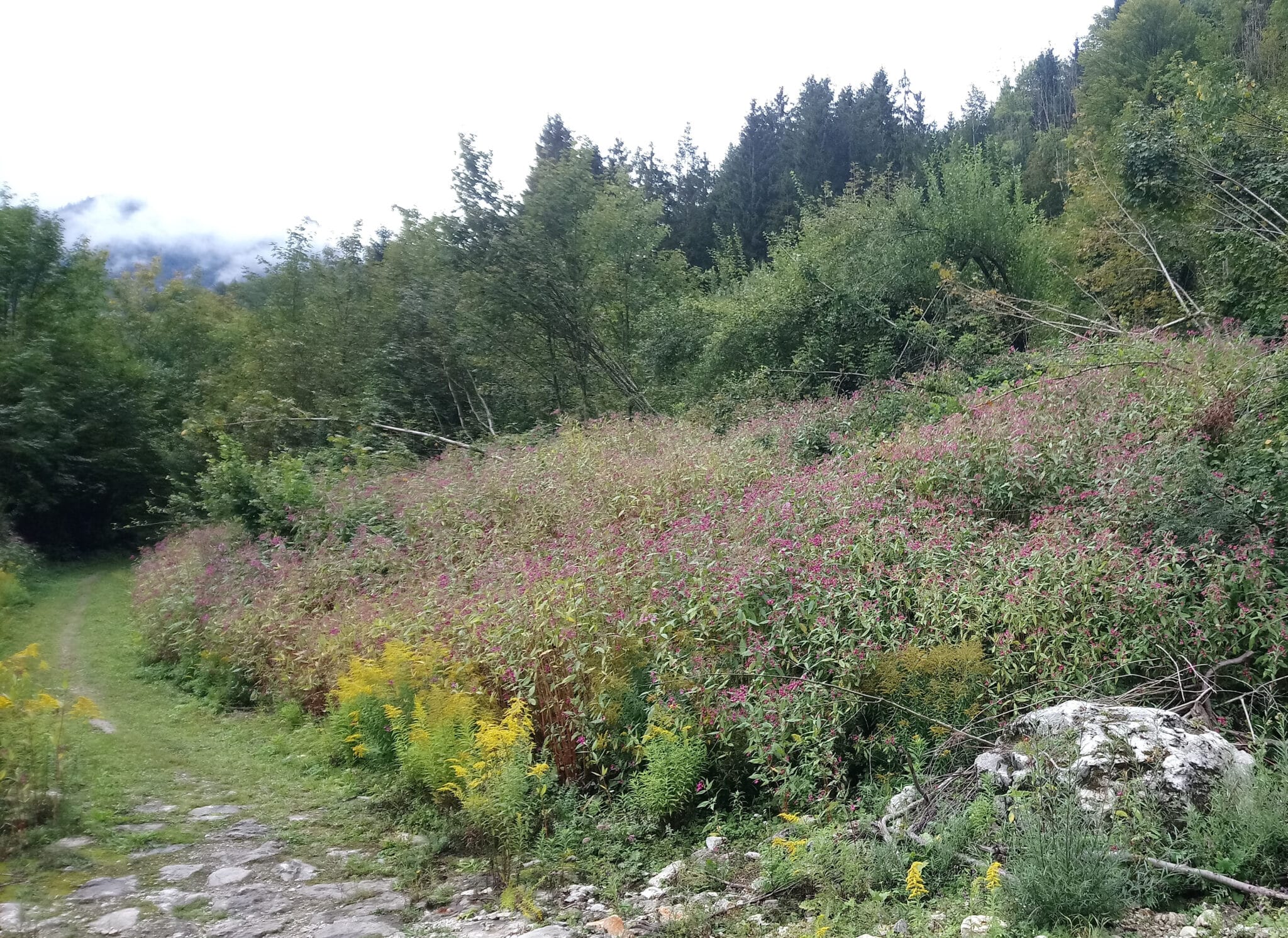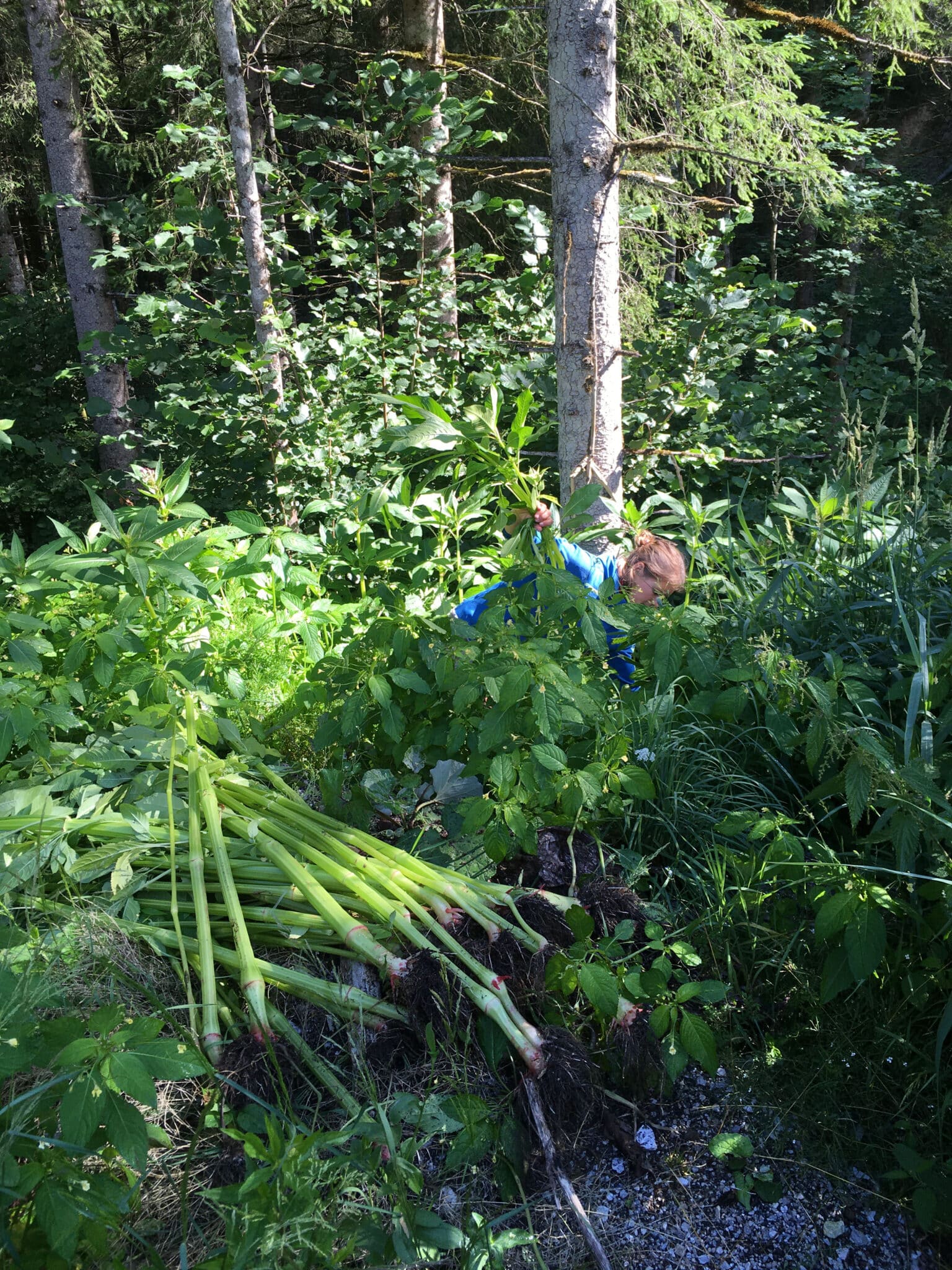

Free the calcareous semi-arid grassland with us!
In winter, the Kalktal is an uncomfortable place. Regular avalanche activity here leaves no stone unturned. And yet avalanche gullies, like the Kalktal, are hotspots of biodiversity. The areas naturally kept free of forest by avalanches have a particularly high biodiversity.
A golden fritillary, one of over 700 butterfly species recorded in the Kalktal, flutters gracefully through the sun-warmed air. Colourful diversity with over 200 different grasses and flowering plants stretch from the Enns upwards as far as the eye can see. Many of these species, such as the heat-loving keel leek or the small agrimony, are otherwise to be found in vain in the entire National Park.
At the heart of this avalanche gully is a calcareous semi-arid grassland, a habitat type protected throughout Europe. But invasive neophytes threaten to overgrow this valuable habitat.
Invasive neophytes are plants that were introduced by humans after the discovery of America (1492) and have successfully established themselves outside their natural range. By spreading rapidly, they can form huge mass populations within a short time and thus displace native species diversity.
In the Gesäuse National Park, too, invasive neophytes such as the horseweed and the Canada goldenrod threaten the native diversity and do not even stop at sensitive habitats such as the calcareous semi-arid grasslands.
In order to protect this habitat, a public neophyte control campaign is taking place in the Gesäuse National Park for the first time this year. "These dominant masses of touch-me-not and goldenrod are impossible to manage alone. That's why we're looking forward to many eager helpers," says Barbara Bock from the Department of Nature Conservation & Research, adding with amusement: "Actually, pulling out plants in the National Park is strictly forbidden...!
Neophyte action
Join us in freeing the calcareous semi-arid grassland from touch-me-not and goldenrod! We will thank you with a snack and a guided tour of the habitat.
Date: Sat, 31.07.2021 from 08:30 until approx. 13:00
Meeting point: Köhler Centre in Hieflau
More info and registration: www.nationalpark-gesaeuse.at
More information on neophytes: www.neobiota.steiermark.at
Enquiry notice:
Barbara Bock, MSc
0664/8252320

The care of threatened habitats is often manual work and requires many helpers. Picture author: Barbara Bock

In the Gesaeuse National Park, a rare calcareous semi-arid grassland is threatened with being overgrown by the hawkweed. Image author: Michéle Lintschnig